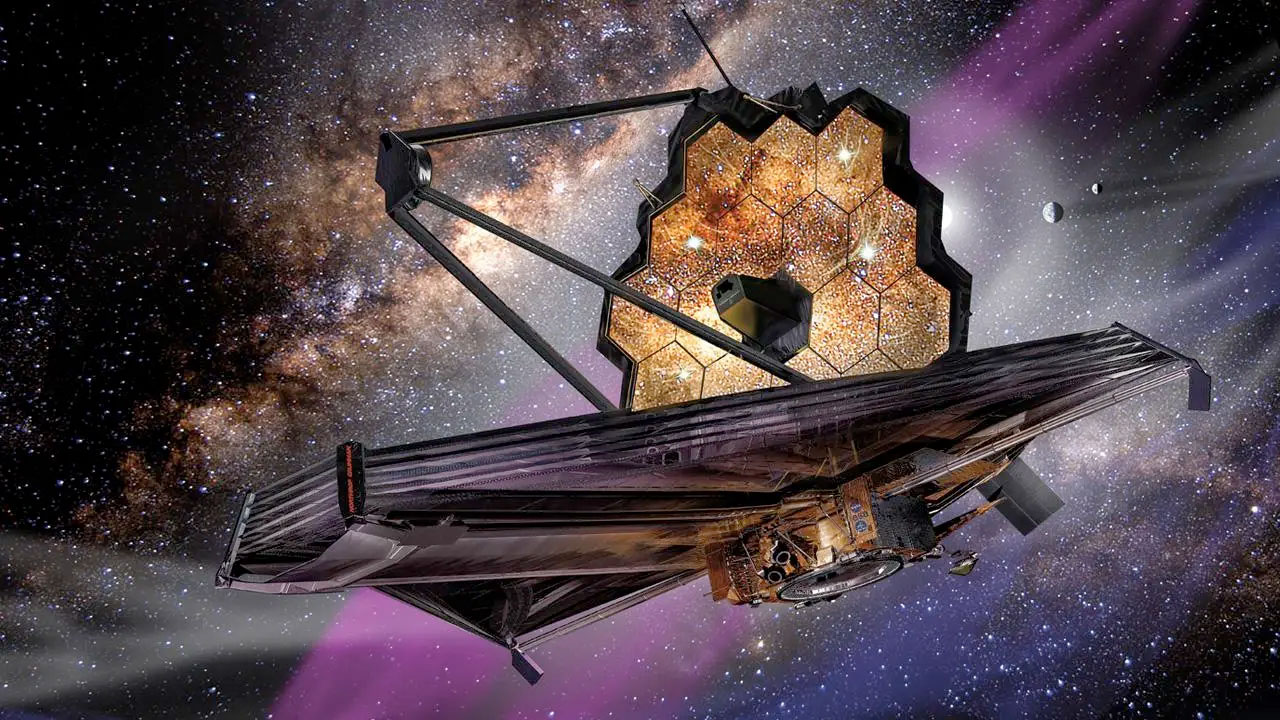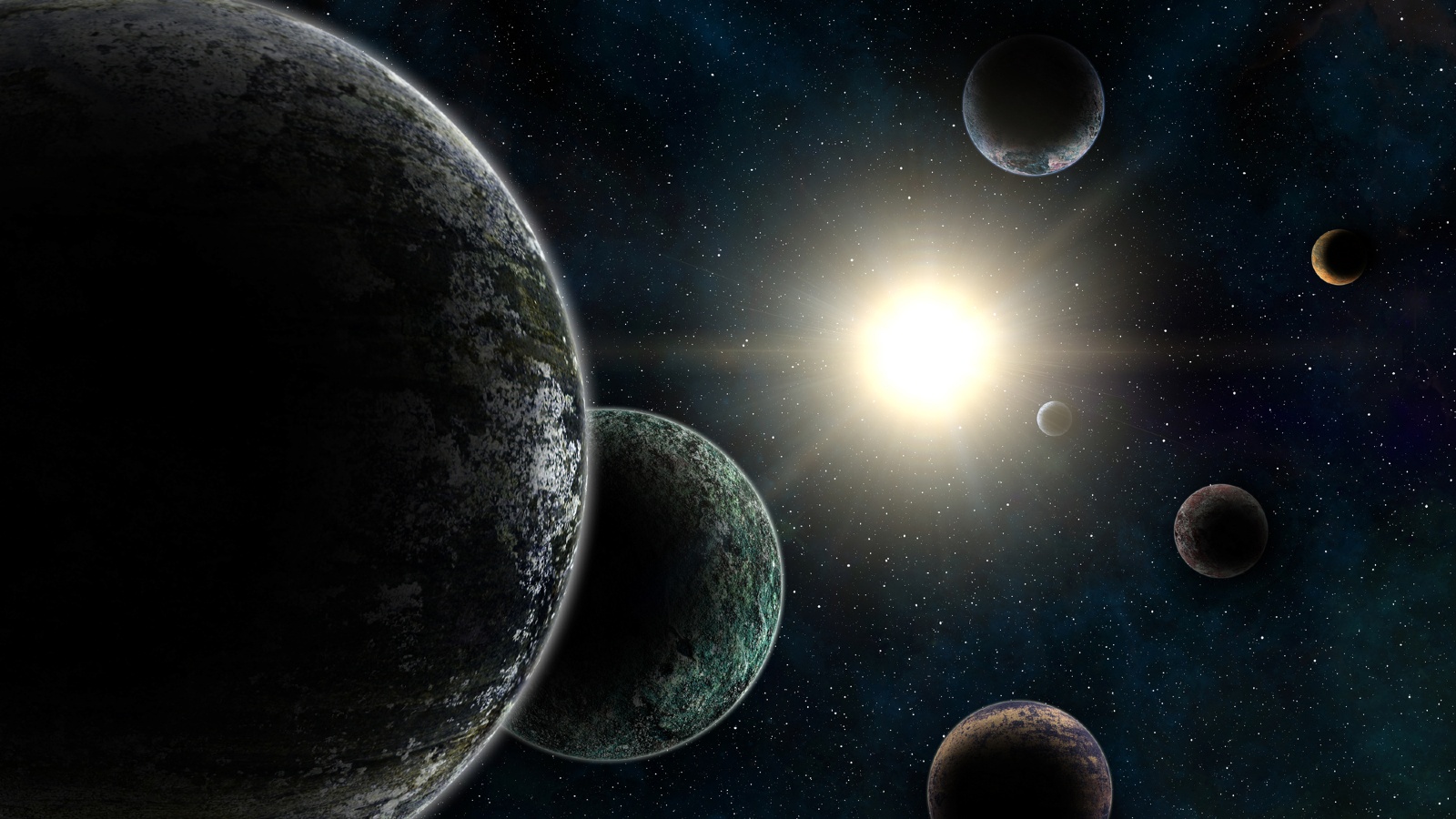James Webb Space Telescope could detect life on Earth from across the galaxy, new study suggests
Researchers have shown that if the James Webb Space Telescope was pointed at Earth from a distant star, it could detect the signatures of intelligent life in our planet's atmosphere.

The James Webb Space Telescope (JWST) would be able to spot the signs of our civilization on Earth if it was spying on us from another star system in the Milky Way, a new study shows.
The finding raises hopes that the state-of-the-art spacecraft could detect alien civilizations as it stares out toward distant worlds in our galaxy.
Since launching in late 2021, JWST has been predominantly peering out into the deepest reaches of the cosmos in search of clues about how the early universe formed. But one of the telescope's secondary objectives is to analyze the atmospheres of nearby exoplanets, or planets beyond the solar system, to look for gases produced by biological life, known as biosignatures, and chemicals produced by advanced alien civilizations, known as technosignatures.
Related: James Webb Space Telescope deepens major debate over universe's expansion rate
But despite being the most advanced telescope currently in operation, it is still unclear how well JWST will be able to spot the tell-tale signs of intelligent life. To answer this question, researchers decided to test whether the space telescope could successfully detect intelligent life from the only planet in the universe that is known to be both habitable and currently inhabited — Earth.
In the new study, uploaded to the pre-print server arXiv on Aug. 28, researchers took a spectrum of Earth's atmosphere and deliberately decreased the quality of the data to mimic how it would look to an observer dozens of light-years away. The team then used a computer model, which replicated JWST's sensor capabilities, to see if the spacecraft could detect the key biosignatures and technosignatures from the dataset, such as methane and oxygen, produced by biological life, and nitrogen dioxide and chlorofluorocarbons (CFCs), which are produced by humans.
The results, which have not yet been peer-reviewed, show that JWST could likely detect all the key markers of non-intelligent and intelligent life in our planet's atmosphere.
Breaking space news, the latest updates on rocket launches, skywatching events and more!
The researchers noted that the quality of the altered dataset is roughly equivalent to JWST observations of planets from TRAPPIST-1 — a star system containing seven exoplanets that orbit a red dwarf star around 40 light-years from Earth. This suggests the telescope should be able to detect life or alien civilizations on exoplanets within 40 light-years of Earth. But the team believes JWST could possibly detect signs of extraterrestrial life up to 50 light-years from Earth.
Only around 20 exoplanets have been officially discovered within a 50-light-year radius of Earth, but based on the number of suspected stars in this region of space, experts predict that there may actually be as many as 4,000 exoplanets within JWST's reach, according to Project EDEN, an international astronomical collaboration dedicated to finding potentially habitable planets close to Earth.
However, this doesn't guarantee that JWST would be able to detect life on other planets.
Detecting biosignatures and technosignatures on other worlds "may prove challenging to interpret without contextual knowledge about the habitable environment," the researchers wrote. In this study, the team already knew which markers to look for, but on an exoplanet with different conditions and alternate potential life forms or technologies those life-signatures may not be as obvious, they added.
JWST has already made some interesting discoveries about exoplanets near Earth. The telescope spotted water on the Neptune-size exoplanet GJ 1214b, which is around 40 light-years from Earth, and found that TRAPPIST-1b, the second-closest exoplanet to the star in the TRAPPIST-1 system, likely has no atmosphere at all due to its extreme heat. The spacecraft also glimpsed a gigantic dust storm in the atmosphere of VHS 1256 b, a "super-Jupiter" exoplanet 40 light-years from Earth.
Closer to home, JWST has also detected giant geysers gushing out of Saturn's moon Enceladus, which could contain the chemical ingredients needed for life. And further out into the cosmos, the spacecraft has also glimpsed potentially life-giving carbon compounds in an infant star system more than 1,000 light-years from Earth.

Harry is a U.K.-based staff writer at Live Science. He studied Marine Biology at the University of Exeter (Penryn campus) and after graduating started his own blog site "Marine Madness," which he continues to run with other ocean enthusiasts. He is also interested in evolution, climate change, robots, space exploration, environmental conservation and anything that's been fossilized. When not at work he can be found watching sci-fi films, playing old Pokemon games or running (probably slower than he'd like).



